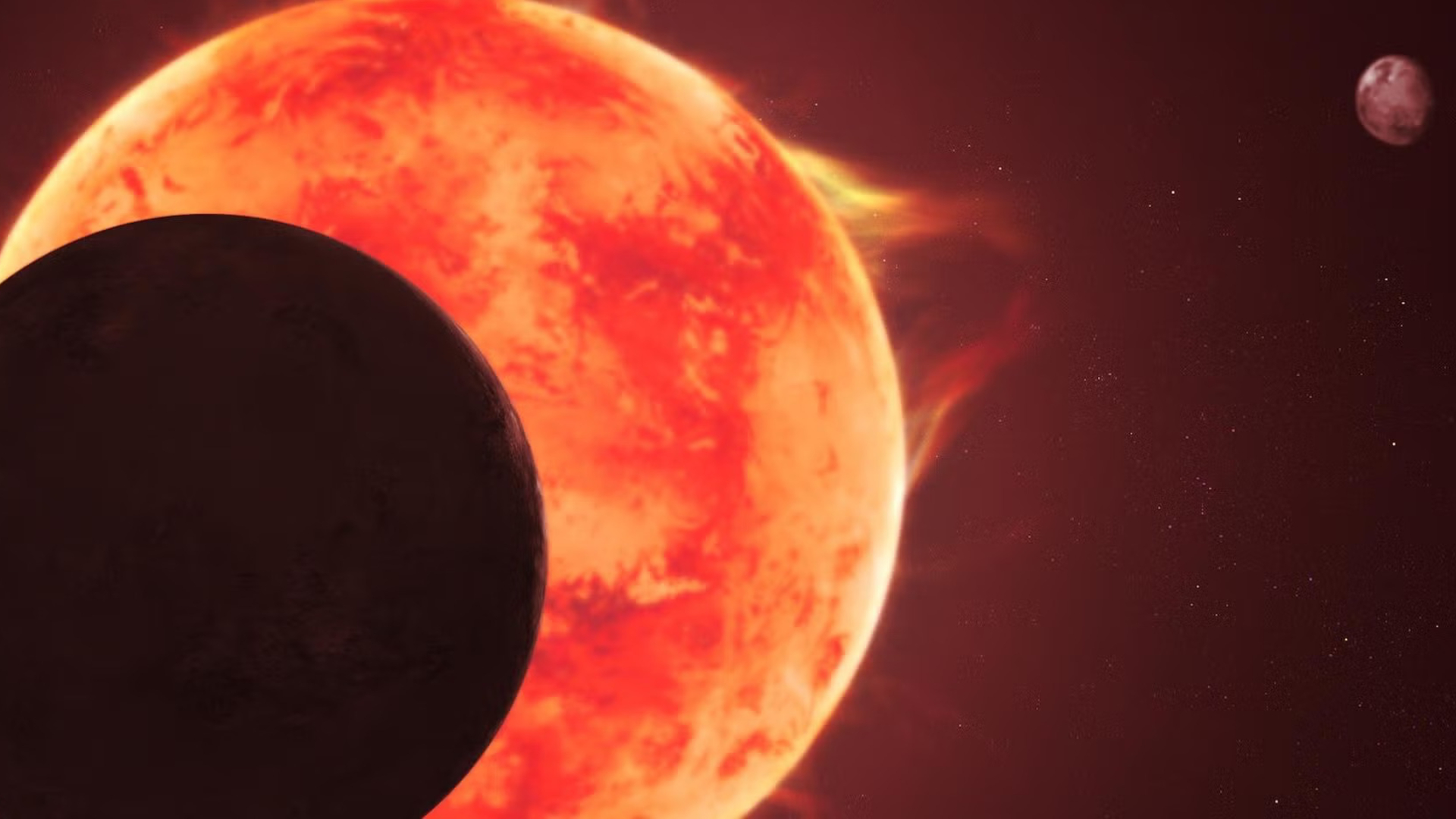No, they're not aliens — SpaceX's Starlink satellites surprise British skywatchers
British skywatchers spotted a trail of lights in their night skies this past weekend as SpaceX's Starlink satellites passed overhead. But some were left baffled by the sparkling display and even suggested on social media that it could be a meteor shower … or aliens.
A shimmering trail of Starlink internet satellites trailed one after another in the sky over Essex in southeast England at approximately 9:20 p.m. local time (4:20 p.m. EDT; 2020 GMT) Sunday (April 19).
Related: SpaceX's 1st Starlink megaconstellation launch in photos!
Twitter user @stevethebath asked, "Anybody know what the long chain of satellites going through the British sky right now are? Must be 50 of them so far?"
Anybody know what the long chain of satellites are going through the British sky right now are ?? must be 50 of them so far ??? #nasa #Satellites #spaceApril 19, 2020
#Satellites what the hell is going on? A straight line of satellites over 20 so far all equally spaced out? pic.twitter.com/EU1uCM9YF1April 19, 2020
More joined in, curious what the twinkling satellites might be. And many were quick to point the finger at "unidentified flying objects" (UFOs).
just went out in the garden, to take in the stars, and saw six "satellites", in a row, a fairly equal distance apart, moving north. Wasn't planes, cos a blinky light jumbo flow under them, and it was lower and slower. Wasn't meteors, cos they dont' travel in a convoy.... #UFOsApril 19, 2020
However, while people got excited at the possibility of a glittering alien visit, the cosmic exhibition was really nothing more than some satellites.
SpaceX intends to, over time, launch a megaconstellation of at least 12,000 Starlink satellites into low Earth orbit to provide better, worldwide internet access. They have so far deployed 362 satellites and plan to launch 60 more on Wednesday (April 22). SpaceX announced Monday (April 20) that they would push up their original launch date of April 22 to April 21.
Breaking space news, the latest updates on rocket launches, skywatching events and more!
"With a more favorable weather forecast for launch and landing, now targeting Wednesday, April 22 at 3:37 p.m. EDT for this week's Falcon 9 Starlink mission," SpaceX wrote on Twitter.
With a more favorable weather forecast for launch and landing, now targeting Wednesday, April 22 at 3:37 p.m. EDT for this week’s Falcon 9 Starlink missionApril 20, 2020
Now, while seeing these satellites in the sky can be an exciting experience and fuel the imagination (and even spark images of aliens), astronomers around the world remain concerned about the megaconstellation. They worry that these satellites will be too bright and will interfere with visibility for scientific observations.
SpaceX founder Elon Musk and company engineers have said the company is working on ways to reduce the brightness of its Starlink satellites, including adding a darker exterior coating and adding a "sunshade" to reduce how shiny they appear.
- 'Losing the Dark': Video illuminates threat of light pollution
- Spectacular time-lapse video shows wonders of the night sky
- Hawaii night sky revealed in stunning new video
Follow Chelsea Gohd on Twitter @chelsea_gohd. Follow us on Twitter @Spacedotcom and on Facebook.
OFFER: Save 45% on 'All About Space' 'How it Works' and 'All About History'!
For a limited time, you can take out a digital subscription to any of our best-selling science magazines for just $2.38 per month, or 45% off the standard price for the first three months.

Chelsea “Foxanne” Gohd joined Space.com in 2018 and is now a Senior Writer, writing about everything from climate change to planetary science and human spaceflight in both articles and on-camera in videos. With a degree in Public Health and biological sciences, Chelsea has written and worked for institutions including the American Museum of Natural History, Scientific American, Discover Magazine Blog, Astronomy Magazine and Live Science. When not writing, editing or filming something space-y, Chelsea "Foxanne" Gohd is writing music and performing as Foxanne, even launching a song to space in 2021 with Inspiration4. You can follow her on Twitter @chelsea_gohd and @foxannemusic.

